Greetings CVM,
For December we’re highlighting some new acquisitions to our eBook collection at Zalk Library. Please take a look!
Have a purchase recommendation? Feel free to email Rae!
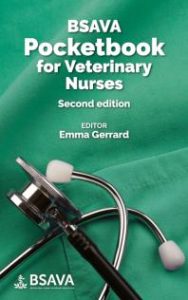
BSAVA Pocketbook for Veterinary Nurses / editor, Emma Gerrard
License note: Unlimited users; please close browser when finished.
The BSAVA Pocketbook for Veterinary Nurses offers quick access to key information on a wealth of procedures. In this second edition, editor Emma Gerrard has built on the excellent work of Louise O’Dwyer to reflect the expanding responsibilities of the profession whilst retaining handy features, such as emergency doses and a ruler on the inside covers. Notable additions include: Surgical and anaesthetic checklists, pain scales for dogs, cats and rabbits, dental recording charts, and PROTECT ME information on antimicrobial resistance.
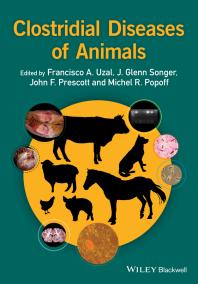
License note: Unlimited users; please close browser when finished.
Clostridial Diseases of Animals is the first book to focus on clostridial diseases in domestic and wild animals, offering a comprehensive reference on these common diseases.

Complications in Equine Surgery / edited by Luis M. Rubio-Martinez and Dean A. Hendrickson
License note: One user at a time; please close browser when finished
Complications in Equine Surgery offers evidence-based information on the description, prevention, recognition, management, consequences and prognosis of technical and post-procedural complications in equine surgery. The text uses a clear and practical approach organized by body system, with coverage including the gastrointestinal, respiratory, musculoskeletal, urogenital, and neurological systems. Each chapter also follows a similar format that includes a short introduction of the procedure, technical complications, and post-operative complications. General practitioners and specialists alike will find Complications in Equine Surgery a must-have resource to improve morbidity and mortality and increase surgical success.
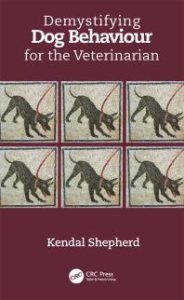
Demystifying Dog Behaviour for the Veterinarian / Kendal Shepherd
License note: One user at a time; please close browser when finished.
The behaviour textbook that’s been missing! – Dr Mandy Roshier, University of Nottingham, School of Veterinary Medicine and Science, UK This practical guide for busy veterinarians demystifies the apparently complex nature of canine behaviour while simultaneously emphasising its importance. Authored by acclaimed veterinary behaviour consultant Kendal Shepherd, the book provides practical knowledge of dog behaviour and an understanding of how to talk about it with clients. Shepherd shows how this can enhance the relationship between owner and pet and between dog and environment, including the vet surgery, as well as improve the vet’s own sense of fulfilment and enjoyment of practice. From a discussion on the true nature of obedience to stressing the importance of behavioural indicators when assessing pain and mental welfare and finally by reminding vets of their obligations under Dangerous Dogs legislation, the emphasis is on the prevention of aggression throughout. Packed with anecdotes drawn from real-life cases, easy to read and understand, the principles explained can be effortlessly assimilated into the average consultation without the need for lengthy report-writing.
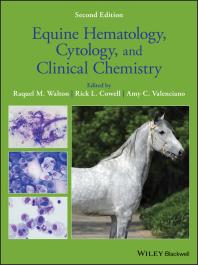
License note: One user at a time; please close browser when finished.
Equine Clinical Pathology, Second Edition draws on the hematology and clinical chemistry information from the first edition and adds valuable cytopathology and hematology material from Diagnostic Cytology and Hematology of the Horse, making it a truly definitive reference to clinical pathology in equids. Thoroughly updated and expanded throughout, the Second Edition offers more images, more information, and new knowledge, particularly in the areas of bone marrow evaluation and cytopathology. This revised edition is a must-have purchase for anyone using hematology, cytology, and clinical chemistry in equine patients. Designed to present clear, concise, and clinically relevant information, the book is logically organized for easy reference. Chapters begin with lists of abbreviations, and images and tables support the text, with information summarized in text where possible for ease of use. Equine Clinical Pathology is a valuable resource for equine practitioners, clinical pathologists and residents, and veterinary students.
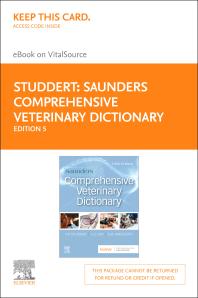
License note: Three Users at a time; please logout when finished.
Saunders Comprehensive Veterinary Dictionary, 5th Edition includes the veterinary technical and scientific words and phrases you might encounter in practice. With well over 60,000 main and subentries including large animals, small animals, and exotics, presented in a user-friendly format, the fifth edition continues its legacy as the most comprehensive dictionary reference in the veterinary field. Completely revised and updated for today’s veterinary team, it now includes an all-new companion Evolve site, which hosts an audio glossary of 1,200 common veterinary terms and an image collection featuring high-quality images from the book. The online site also includes printable appendices with essential reference information including conversion charts and blood groups of domestic animals. More than 60,000 main entries and subentries are included, making this the most comprehensive dictionary covering the whole range of veterinary medicine including large and small animals and exotic pets.
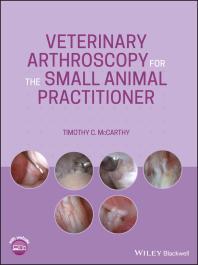
Veterinary arthroscopy for the small animal practitioner / edited by Timothy C. McCarthy
License note: One user at a time; please close browser when finished.
Arthroscopy provides more information about intra-articular pathology than any other diagnostic technique. The most important advantages of arthroscopy are visual access to more joint area, magnification produced by the telescopes and video systems, excellent illumination, and a clear visual field when continuous irrigation is employed. Arthroscopy is also minimally invasive; reduces trauma, shortens operative times, and decreases recovery times. The small sizes of telescopes available today allows placement into the deepest parts of joints and combined with angulation of the field of view, 30 degrees for most arthroscopes, provides visual access to more area of joints than can be achieved with open surgery. Arthroscopes magnify intra-articular structures allowing visualization of anatomical details and pathologic changes that are beyond the resolution of radiographs, CT, MRI or what can be seen with open surgery.
